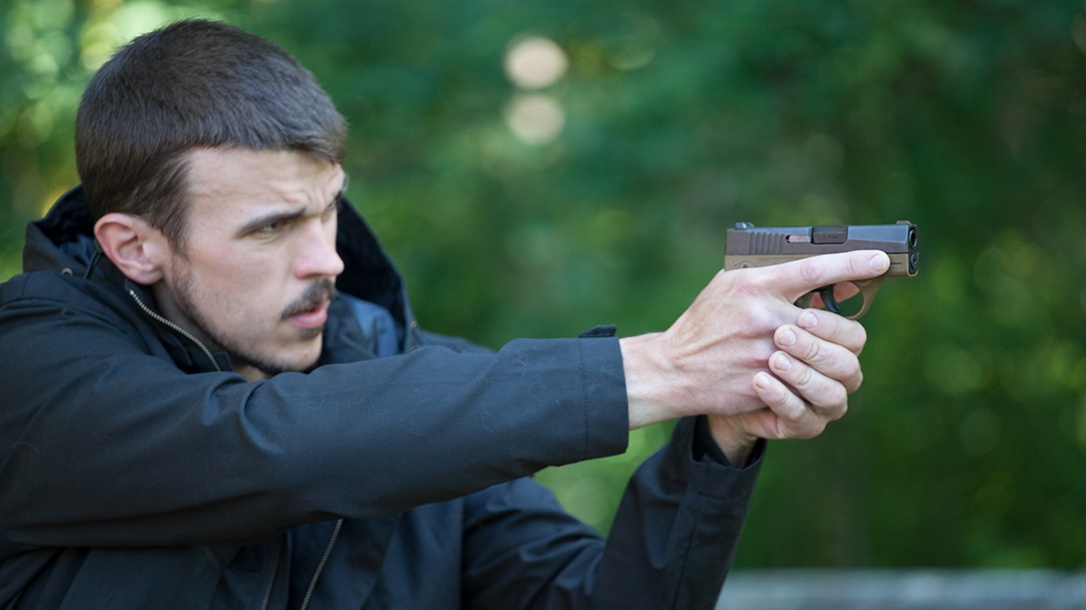Most shooters have heard of the 21-foot rule. However, few understand from where it came. Many mistakenly believe that 21 feet is the furthest distance an attacker armed with a knife can be before a person can use of deadly force. That is not true, especially since it is truly difficult to judge distance when staring at an armed attacker. The 21-foot rule comes from an article written by Salt Lake City police officer Dennis Tueller, which is also why it is called the Tueller drill.
Tueller basically asked how close is too close when it comes to a knife. A man is standing with a knife between 20 and 25 feet away. In that situation, could you draw and fire before the attacker can cut you? Tueller determined that at 21 feet, an attacker could reach the shooter before he could fire; it takes, on average 1.5 seconds for a knife-wielding attacker to cover 21 feet.
Advertisement — Continue Reading Below
Tueller’s determination pushed firearm trainers to think about this issue. It also changed how police departments viewed edged and blunt instrument attacks. They then started developing drills to teach the skills needed for this situation.
The Tueller Drill
There are a lot of ways to run a Tueller or 21-foot drill. The easiest consists of setting a target at 7 yards, and putting two rounds center mass in 1.5 seconds. Shot timers work well for this drill. Police typically practice this from duty holsters, but concealed carriers should draw from under a cover garment.
Another method is to have another person stand at the back of the shooter, facing in the opposite direction. At a whistle, the shooter fires two rounds at a 7-yard target. At the same time, the runner takes off, dropping a flag at each shot. Measure the distance to determine skill of the shooter.
Advertisement — Continue Reading Below
Shooters can learn a lot from these drills, but it can’t implement the stress of a charging attacker. This, however, can be brought into play with attack targets, but they aren’t cheap. Another informative way to do this drill is with airsoft guns and rubber knives in force-on-force training. Just be sure to use the proper airsoft equipment that is similar to standard carry gear.
Lessons of the Tueller Drill
Many people misunderstand the point of the original article, which leaned heavily toward awareness. People using situational awareness can often avoid the need to draw. However, the drill can teach folks about a great many factors of a self-defense situation, particularly movement.
The drill is about awareness and drawing and firing quickly, but in a real situation, shooters should never stand still and face down a charging attacker. Instead, move to cover or even concealment. This is could be a car, a road sign, whatever, as long as it slows down the attacker. In fact, even backpedaling can provide crucial time to get a gun into play. Practicing these moves can be difficult at many ranges, but it might be worth the effort to get this training. Besides, shooting on the move is another important skill.
Advertisement — Continue Reading Below
























